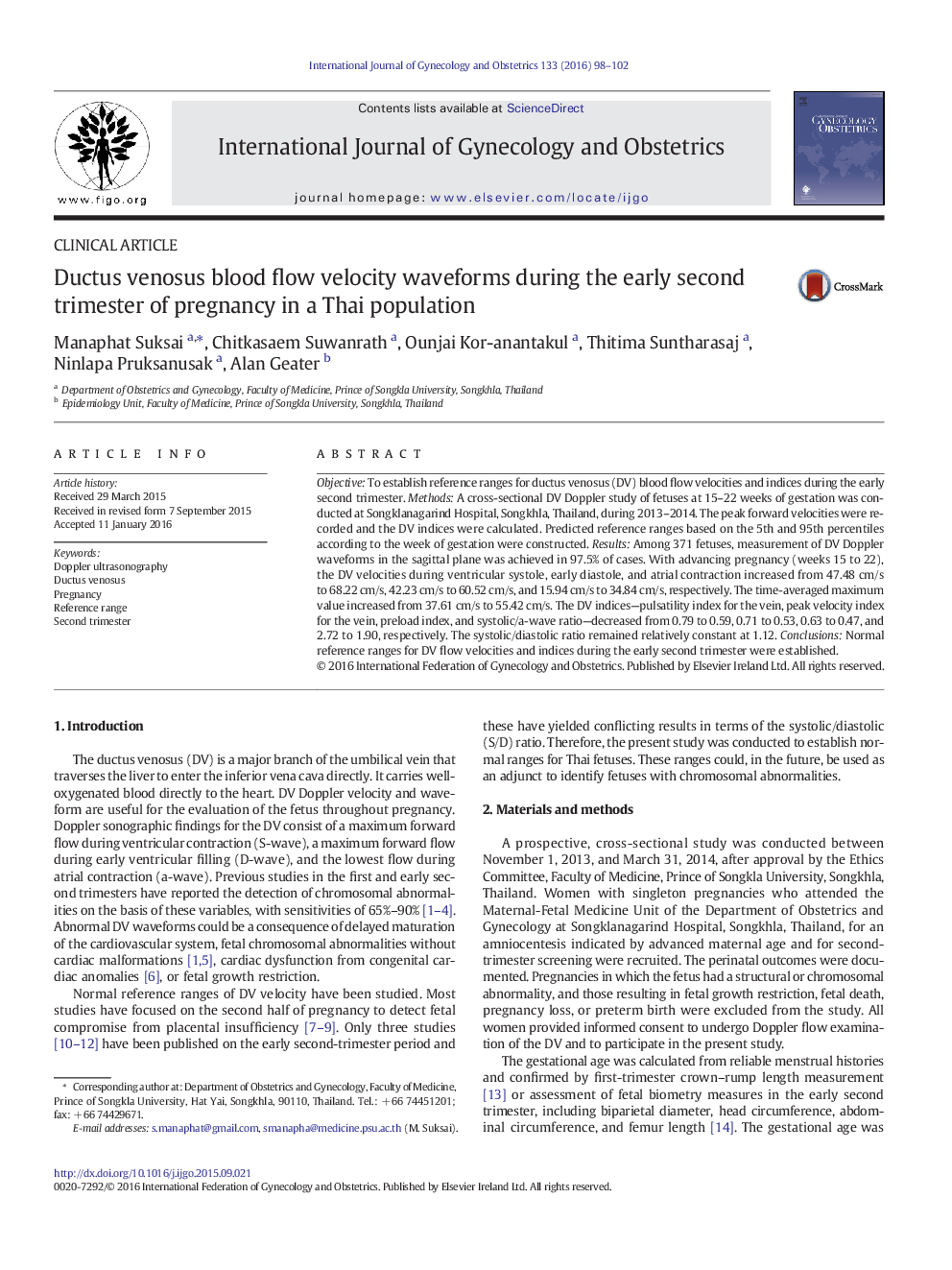| Article ID | Journal | Published Year | Pages | File Type |
|---|---|---|---|---|
| 3952156 | International Journal of Gynecology & Obstetrics | 2016 | 5 Pages |
ObjectiveTo establish reference ranges for ductus venosus (DV) blood flow velocities and indices during the early second trimester.MethodsA cross-sectional DV Doppler study of fetuses at 15–22 weeks of gestation was conducted at Songklanagarind Hospital, Songkhla, Thailand, during 2013–2014. The peak forward velocities were recorded and the DV indices were calculated. Predicted reference ranges based on the 5th and 95th percentiles according to the week of gestation were constructed.ResultsAmong 371 fetuses, measurement of DV Doppler waveforms in the sagittal plane was achieved in 97.5% of cases. With advancing pregnancy (weeks 15 to 22), the DV velocities during ventricular systole, early diastole, and atrial contraction increased from 47.48 cm/s to 68.22 cm/s, 42.23 cm/s to 60.52 cm/s, and 15.94 cm/s to 34.84 cm/s, respectively. The time-averaged maximum value increased from 37.61 cm/s to 55.42 cm/s. The DV indices—pulsatility index for the vein, peak velocity index for the vein, preload index, and systolic/a-wave ratio—decreased from 0.79 to 0.59, 0.71 to 0.53, 0.63 to 0.47, and 2.72 to 1.90, respectively. The systolic/diastolic ratio remained relatively constant at 1.12.ConclusionsNormal reference ranges for DV flow velocities and indices during the early second trimester were established.
